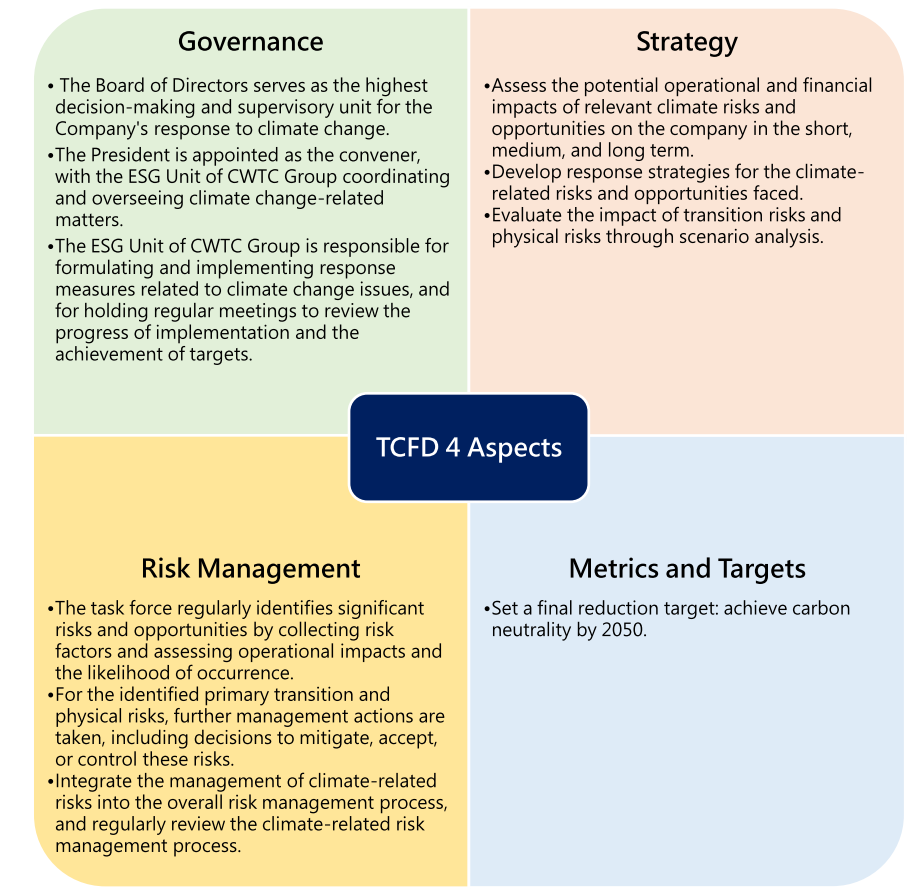
Corporate Sustainability
ENVIRONMENT
Task Force on Climate-Related Financial Disclosures (TCFD)
Climate action has become a critical factor in evaluating international commitments to carbon reduction. Therefore, CWTC follows the framework of the Task Force on Climate-related Financial Disclosures (TCFD) to disclose effective data on the financial impacts, the risks and opportunities brought by climate change, and to establish relevant response strategies while assessing potential financial impacts. This approach aims to enhance the management framework for responding to climate change, demonstrating the resilience of the Company's operations.

※TCFD Operational Management Framework
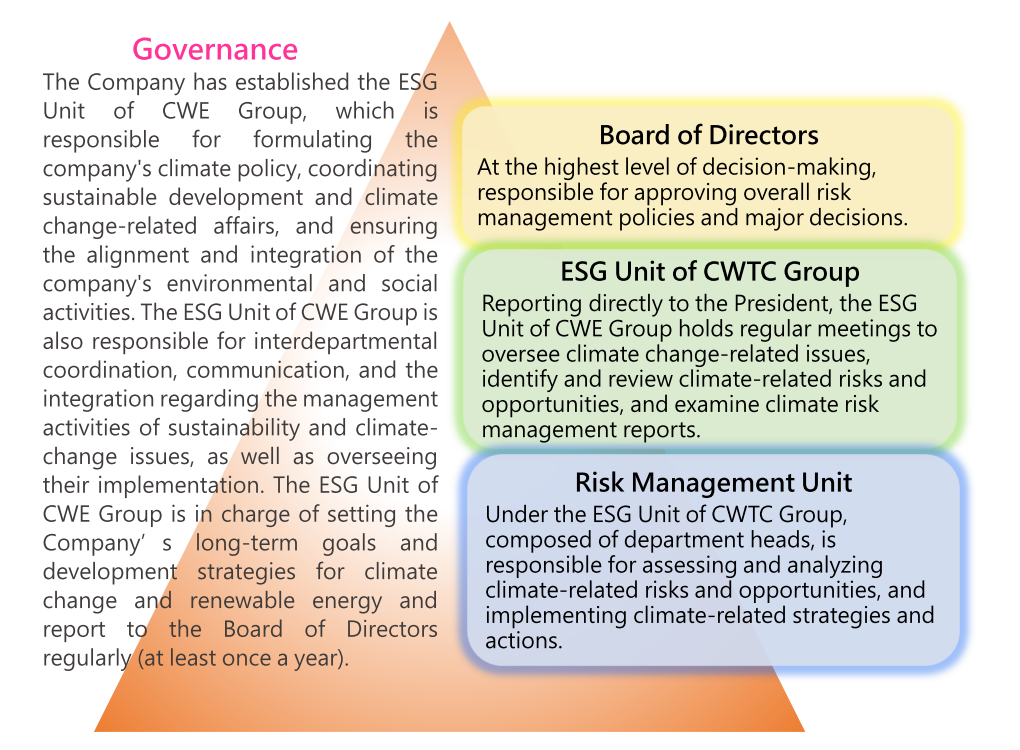

※Financial Impacts and Response Measures of Climate Change Risk and Opportunity
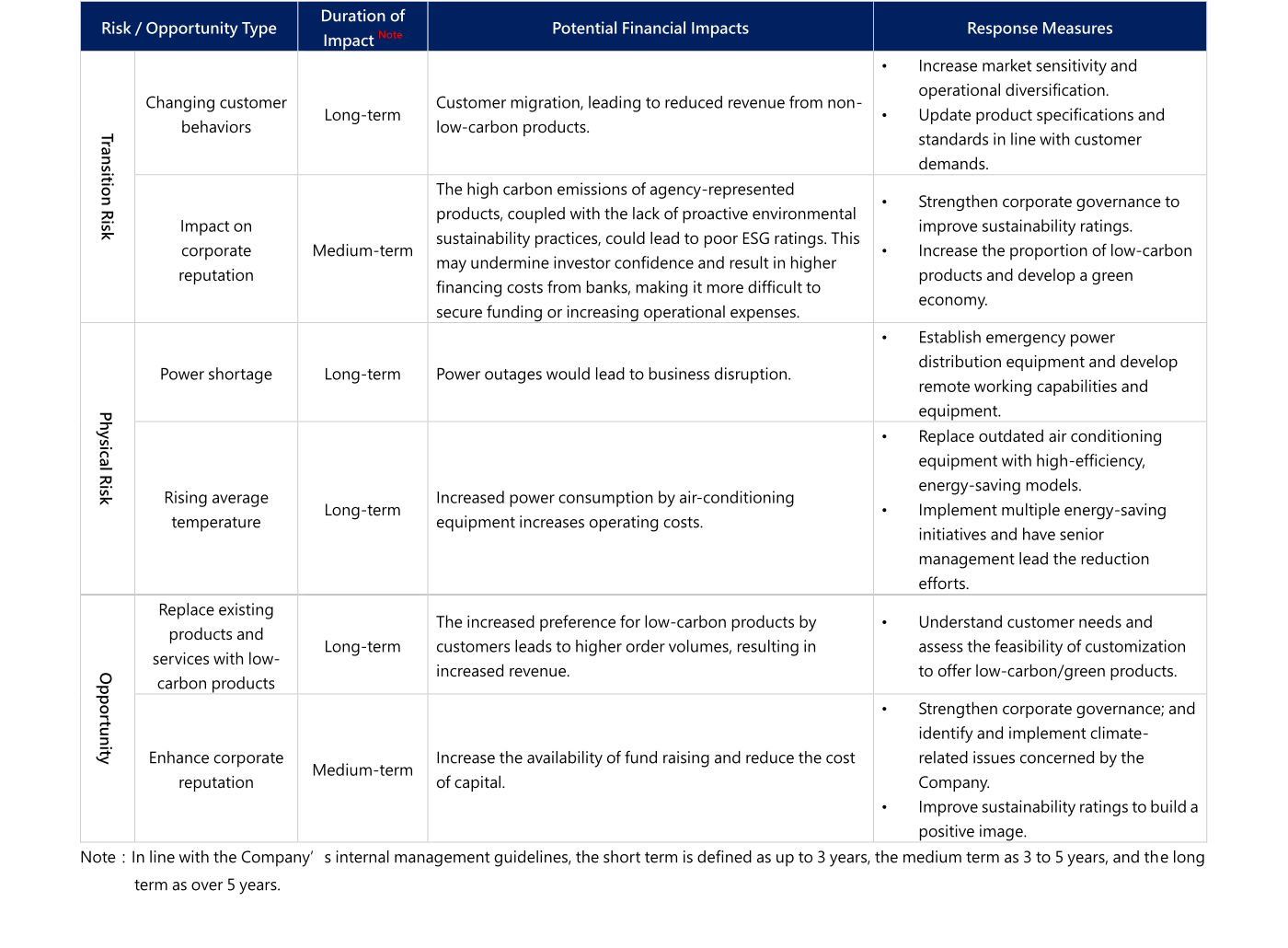
※Climate Scenario Analysis
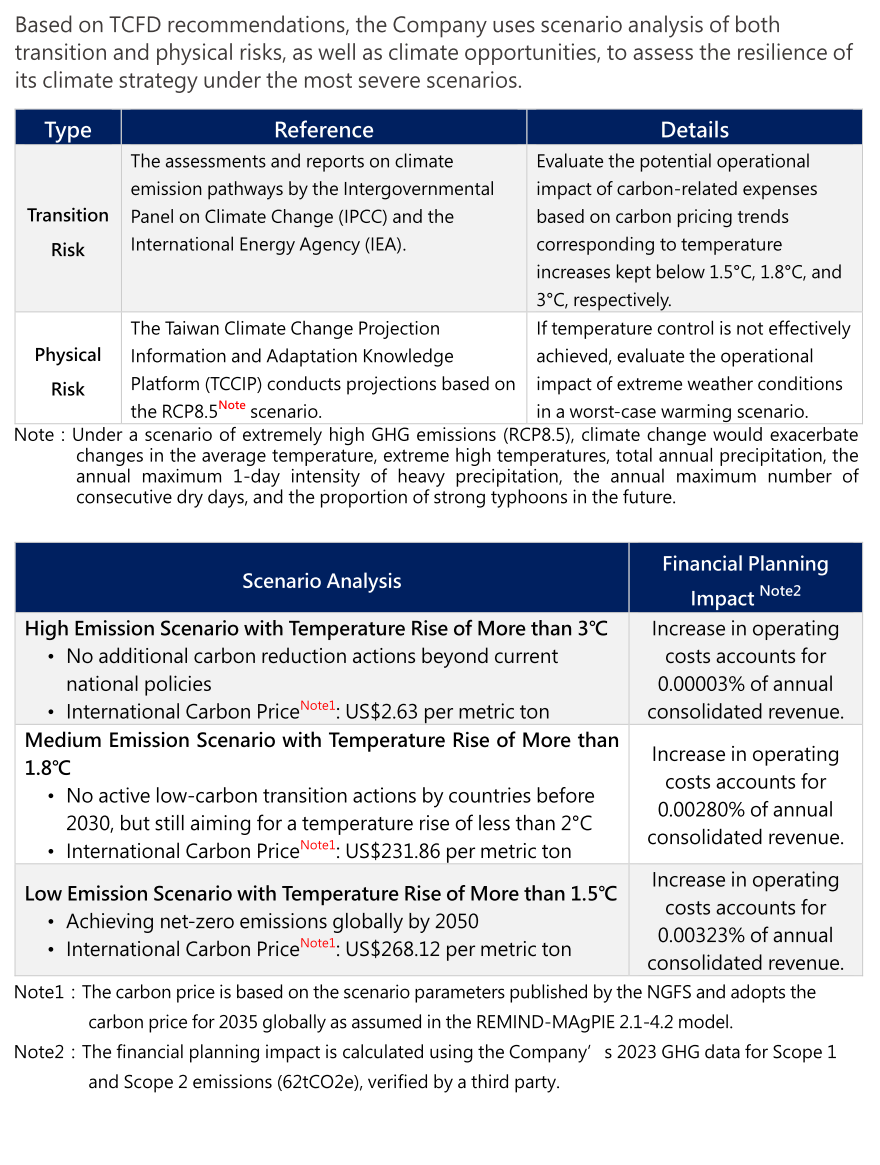
The Company conducts a physical risk scenario analysis of its operations to understand the impact of climate-related risks on its business, strategy, and financial planning under the RCP8.5 scenario. Heavy rainfall or floods caused by extreme weather may disrupt product transport or even result in work suspension. Since all of our operations are located in the metropolitan areas with sound flood control facilities and well-developed information networks, losses are not expected to have a significant impact.
※Risk Management
In 2023, the Company established a “Risk Management Policy” to integrate climate-related risk management processes into its enterprise risk management processes. The results and experiences of this ongoing work are regularly reported to the Board of Directors by the responsible units.
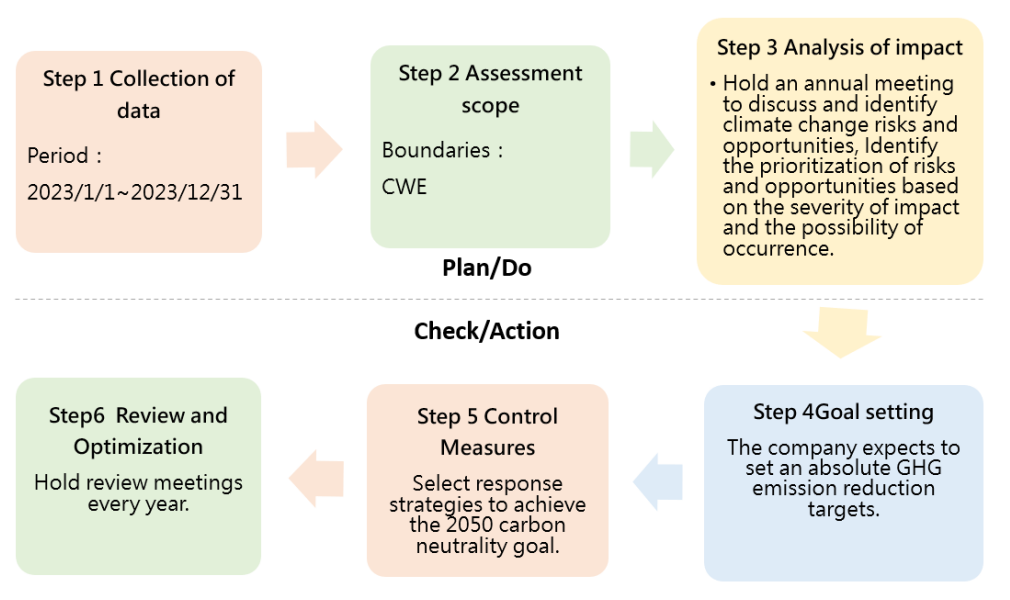
※Metrics and Targets
The Company will annually inventories its GHG emissions from 2023 and verifies the accuracy of these emissions through third-party impartial agencies. The revised "Climate Change Response Act" of 2023 stipulates that net zero GHG emissions must be achieved by 2050. It also requires a science-based approach to assess climate risks, strengthen governance capabilities, and enhance resilience.
In alignment with government policies and the Science Based Targets initiative (SBTi), the Company plans to set a GHG reduction target based on Scope 1 and Scope 2 emissions, with the ultimate goal of achieving carbon neutrality by 2050.
